Key takeaways:
- Local business networking focuses on building genuine relationships that foster collaboration and support, often leading to valuable insights and opportunities.
- Feedback is crucial for enhancing networking skills, promoting trust, and creating a culture of reciprocity within the business community.
- Gathering feedback through follow-up surveys and casual conversations can uncover valuable insights that shape future networking strategies and enhance participant engagement.
- Successful networking initiatives often evolve based on community feedback, leading to increased participation and stronger partnerships among local businesses.
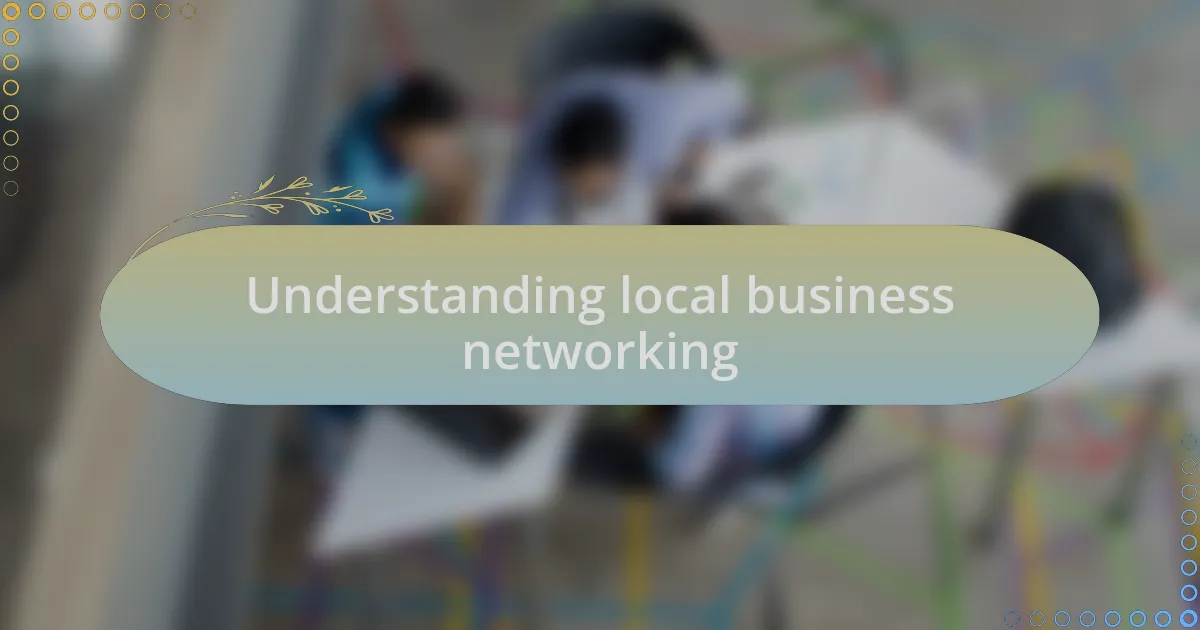
Understanding local business networking
Local business networking is more than just exchanging business cards; it’s about building genuine relationships that can lead to collaboration and support. I remember my first networking event, filled with apprehension and a few butterflies in my stomach. Yet, as I started to connect with others, I realized that those shared stories and experiences were the bedrock of a thriving local business community.
When I think about local business networking, I often recall the power of a single conversation. I once spoke with a fellow entrepreneur who shared invaluable advice that changed my approach to marketing. It made me wonder—how many insights are waiting to be discovered in every chat? The beauty of networking lies in those spontaneous moments of learning, where everyone has something unique to contribute, often leading to unexpected opportunities.
Moreover, understanding local business networking involves recognizing the unique dynamics of your community. It’s intriguing how different regions foster different networking styles. For instance, I’ve noticed that some areas prioritize formal meetings, while others thrive on casual meet-ups at coffee shops. This diversity in approach has taught me to adapt and embrace various strategies, creating richer connections that resonate with both my business goals and those of my peers.

Importance of feedback in networking
Feedback plays a crucial role in local business networking, acting as the compass that steers relationships toward mutual growth. I’ve often found that when I request feedback after an event or meeting, it opens the door to candid conversations that deepen connections. Has anyone ever shared a perspective with you that completely shifted how you viewed your networking approach? I can genuinely say that those moments helped me refine my strategies and build stronger alliances.
What truly amazes me is how feedback reflects the collective wisdom of a network. During one particular networking event, a connection candidly pointed out how I could improve my pitch. Although it stung a little at first, I later realized that this insight transformed my confidence in future presentations. Why shy away from constructive criticism when it can lead to profound personal and professional growth?
In my experience, embracing feedback not only enhances your networking skills but also fosters an environment of trust. When you openly seek opinions and show that you value others’ insights, it encourages a culture of reciprocity. Have you ever felt more connected to someone after they expressed genuine interest in your work? That warm feeling comes from a place of shared investment in each other’s success, making feedback an integral part of developing meaningful relationships in the local business scene.
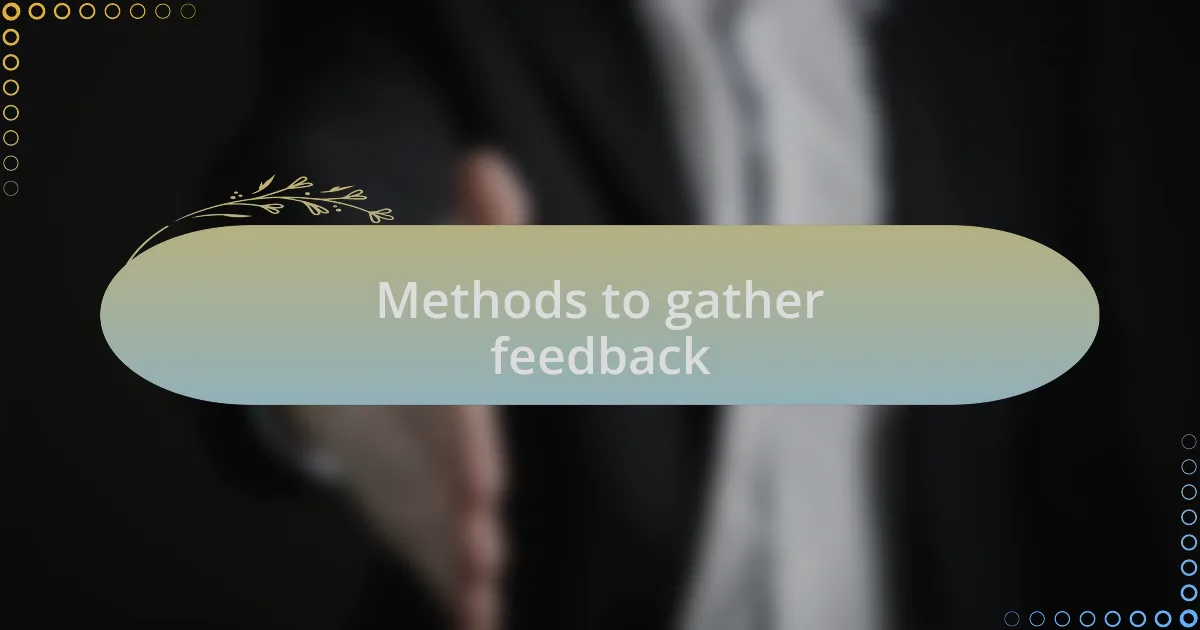
Methods to gather feedback
One effective method to gather feedback is through follow-up surveys after networking events. I remember sending out a simple survey after a community gathering, and I was pleasantly surprised by the number of responses I received. It felt like a treasure trove of insights, from suggestions on speakers to preferences for smaller breakout sessions. Have you ever reflected on how one set of questions could open up a floodgate of ideas?
Another approach I’ve found valuable is having casual one-on-one conversations with attendees. During a recent coffee catch-up with a fellow entrepreneur, I asked for their thoughts on our last event. What started as a light chat turned into a deep discussion about engagement strategies. It reinforced my belief that informal settings can elicit more honest feedback. Don’t you think people are often more willing to share their true feelings in a relaxed environment?
Lastly, leveraging social media is an excellent way to gather feedback in real-time. I’ve tweeted polls about our networking themes and celebrated the instant responses. It’s both dynamic and engaging, giving me direct insight into what resonates with our audience. Have you experienced how a quick social media interaction can spark a deeper connection with your network?

Analyzing feedback for insights
Analyzing the feedback we’ve collected can be a revelation. After reviewing the post-event surveys I conducted, I was struck by a recurring theme: attendees craved more interactive segments. That realization led me to reevaluate our format entirely. Have you ever considered how a few simple words from others can shift your perspective?
I also remember a particular session where one comment stood out—a participant expressed feeling overshadowed during discussions. This insight prompted me to implement a system to ensure everyone has a chance to voice their thoughts. It reminded me that even small shifts could significantly enhance the networking experience. How often do we overlook the quieter voices in the room?
Furthermore, assessing feedback from social media sparked unexpected ideas. One tweet suggested a virtual networking event on a Saturday morning. The immediate positive reactions encouraged me to experiment with that concept. It taught me the power of being open to unconventional ideas that emerge from casual conversations. Have you ever tried something new simply because you listened to your audience?
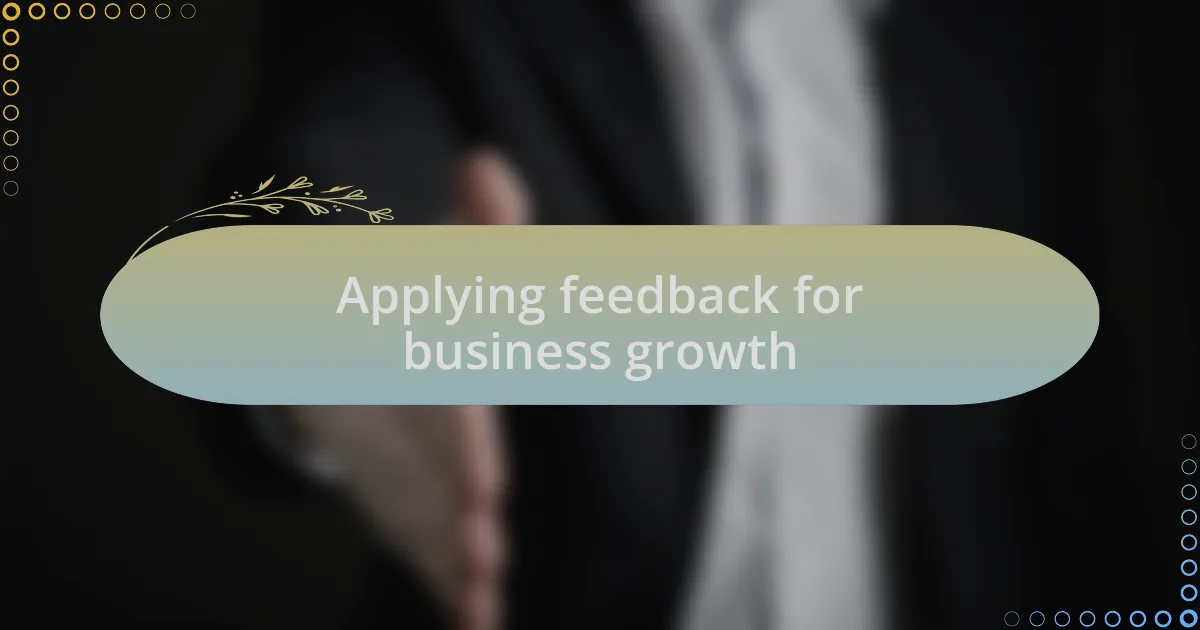
Applying feedback for business growth
The feedback we received after our last networking event was eye-opening. One comment that stuck with me was from a small business owner who expressed feeling intimidated by more established participants. I took this to heart and decided to create a buddy system, pairing newcomers with seasoned networkers. This simple adjustment fostered a more inclusive environment. Have you ever noticed how small changes can unlock greater participation?
Another piece of feedback indicated that our follow-up emails felt impersonal, which really hit home for me. I realized that these communications were a missed opportunity to build deeper connections. So, I began incorporating personalized notes, referencing specific interactions from the events. It turned my outreach from generic to genuine. Has there been a time when you felt more connected because someone recognized you personally?
I still remember the thrill of launching a new workshop based on the demand highlighted in our surveys. Participants had shared a strong desire for skills training, and we responded quickly. When the workshop filled to capacity, I realized that implementing feedback wasn’t just about listening; it was about taking decisive action. How often do we let opportunities slip by because we fear change?
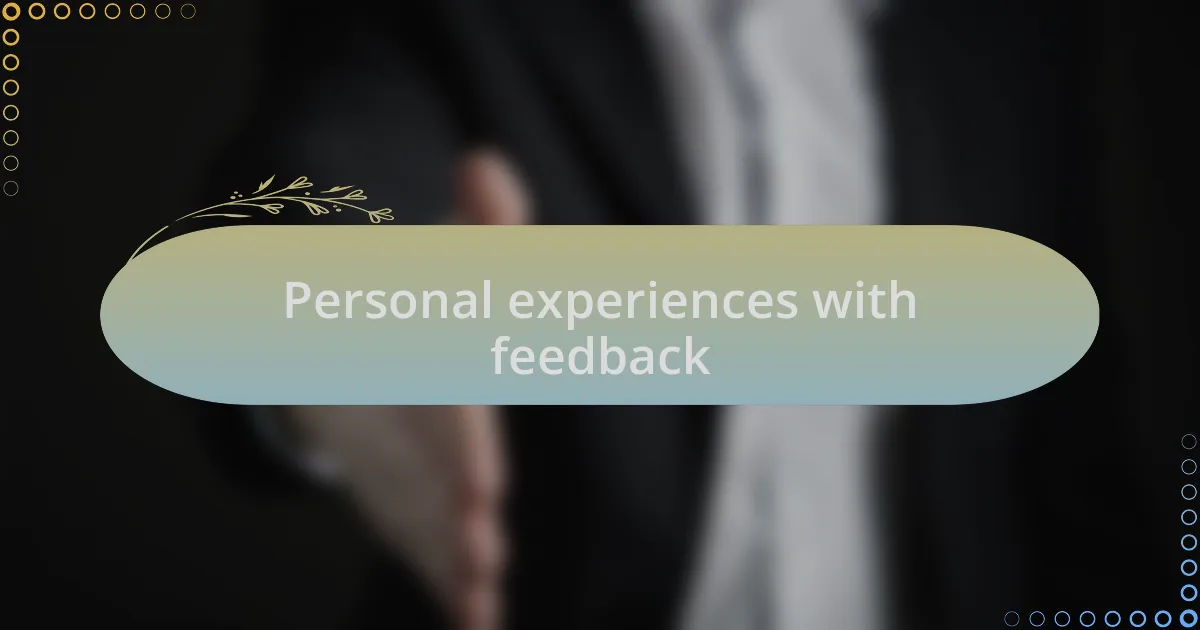
Personal experiences with feedback
One of my most memorable experiences with feedback came from a local entrepreneur who boldly pointed out that my presentation style during our networking events was too formal. At first, I felt a sting of pride; after all, I had honed my skills for years. But then, I pondered—was I truly connecting with my audience? This realization pushed me to adopt a more conversational approach. It transformed not only how I engaged with attendees but also how they responded. Have you ever adjusted your style based on someone’s candid feedback and found your interactions improving?
On another occasion, during a brainstorming session, a participant suggested removing jargon from our discussions. Initially, I was taken aback. I had always assumed that using industry terms made the conversation richer. However, I soon recognized that not everyone shared my background. By simplifying our language, we created a space where all voices felt valued. Isn’t it amazing how clarity can bridge gaps and foster genuine dialogue?
Feedback also played a vital role when I launched a referral program. Some people expressed confusion about the process, which made me realize I hadn’t communicated it effectively. I decided to host a simple Q&A session to clarify details. The transformation was remarkable—suddenly, the program buzzing with energy brought in a flurry of new connections. Have you ever witnessed how addressing confusion with direct communication can energize a community?
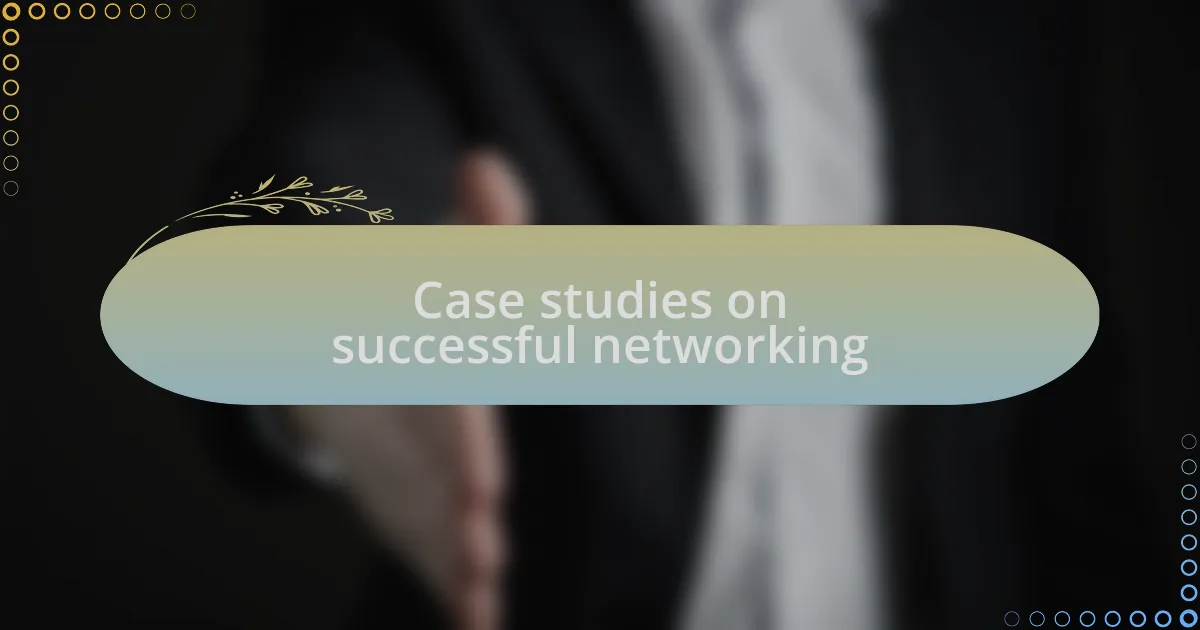
Case studies on successful networking
One example of successful networking that stands out to me is a collaboration I facilitated between two local businesses: a coffee shop and a bookstore. They decided to host a monthly “Books & Brews” event, where customers could enjoy a cup of coffee while participating in a book discussion. What struck me was how feedback from patrons helped shape the event. Initially, attendance was low, but after hearing from visitors about their preferences for book genres and discussion formats, the owners adapted their offerings. The outcome? Attendance tripled in a few months. Have you ever seen how listening to your audience can revitalize an initiative?
Another impactful case was a local fitness center seeking to expand its community outreach. They incorporated feedback from members about their experiences with local health workshops. In response, the center organized a community health fair featuring local health professionals and interactive sessions. The fair not only drew in new members but also fostered partnerships with other businesses, creating a vibrant networking environment. It’s fascinating how addressing community needs can cultivate connections. Have you thought about what your business could achieve by tuning into local voices?
Lastly, I recall a local chamber of commerce that revamped its networking events after receiving constructive feedback. The members indicated that traditional formats felt stale and uninviting. In response, the chamber introduced themed networking nights and interactive icebreakers. This shift in strategy sparked excitement and encouraged participation among diverse groups, resulting in unexpected collaborations. It really made me consider: how often do we overlook the potential for innovation when sticking to the status quo?